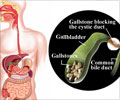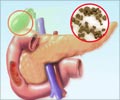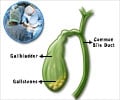Glossary
Abdominal CT scan: This test uses computers and rotating X-ray machines to create cross-sectional images of the body. These images provide more detailed information than normal X-ray images. They can show the soft tissues, blood vessels, and bones in various parts of the body.Alkaline phosphatase: This is an enzyme which is mostly concentrated in the liver, the bile ducts, bones and placenta.
Aminotransferase: This is an enzyme which is found mainly in liver and body uses this enzyme to break down food into energy.
Amylase: Amylase is a protein made by your pancreas and by glands in and around your mouth and throat. It helps you break down carbohydrates and starches into sugar.
Bilirubin: Bilirubin is an orange-yellow pigment that is formed when part of your red blood cells break down in the normal wear and tear process.
Cholescintigraphy (HIDA Scan): This is an imaging procedure which uses radiotracers to diagnose problems of the liver, gallbladder and bile ducts. After intravenous injection, the radiotracers are taken up by liver cells and then excreted into the biliary system.
ERCP (Endoscopic Retrograde Cholangiopancreatography): This is a procedure where an endoscope is lowered down your throat, stomach and into your duodenum. A small camera mounted on the endoscope will send video images of the liver, bile duct, gall bladder and pancreas to a monitor.
Enzymes: These are proteins manufactured in the body by different cells and act as a catalyst in various biological functions. For example, they help break down larger molecules of carbohydrates, protein and fats during digestion.
Hepato Biliary Nuclear Imaging: Small amounts of radioactive materials called radiotracers are used to evaluate the parts of the biliary system, including the liver, gallbladder and bile ducts.
Lipase: An enzyme made by the pancreas to digest fats into fatty acids.
Magnetic Resonance Cholangiopancreatography (MRCP): It is a medical imaging technique that uses magnetic resonance imaging to visualize the biliary and pancreatic ducts in a non-invasive manner.












